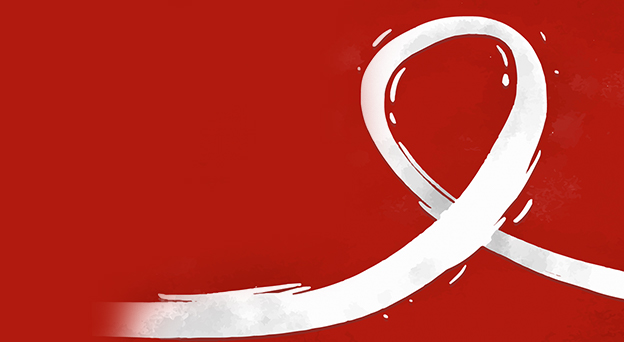Blog
The role of MEDIA in Nigeria’s fight against HIV

By Gloria Essien
The role of the media in Nigeria’s battle against the menace of HIV is indeed paramount and multifaceted. The media has evolved into a critical and indispensable partner in the fight against the scourge of HIV, echoing the sentiment expressed by the late United Nations Secretary-General, Mr. Kofi Annan
He said “When you are working to combat a disastrous and growing emergency, you should use every tool at your disposal. HIV/AIDS is the worst epidemic humanity has ever faced. Broadcast media have tremendous reach and influence, particularly with young people, who represent the future and who are the key to any successful fight against HIV/AIDS. We must seek to engage these powerful organizations as full partners in the fight to halt HIV/AIDS through awareness, prevention, and education.”
His words underscore the media’s pivotal role in raising awareness, preventing new infections, and educating the public about HIV.
Since the discovery of HIV in Nigeria in the 1980s, the media has played an essential role as a stakeholder and partner in the battle against the epidemic. Nigeria’s rich cultural, religious, and ethnic diversity makes the media’s involvement in creating awareness and educating the masses even more crucial. Without the media championing awareness, enlightenment, and advocacy campaigns, it would have been inconceivable to combat the epidemic effectively.
These platforms empower individuals to make informed choices about their health. Furthermore, the media plays a vital role in destigmatizing people living with HIV. Through storytelling, drama presentations, jingles, and advertorials, the media analyzes stereotypes, rewrites narratives and breaks down barriers and prejudices.
This humanizes the epidemic, fosters empathy, and helps combat stigmatization, as exemplified by the case of Mrs. Eunice Enejo, whom I met during one of my coverages as a health reporter for Voice of Nigeria.
She stated that one of the greatest challenges facing Persons Living with HIV (PLWHIV) is stigmatization. She noted that the fear of being stigmatized by society has led many to shy away from testing and treatment.
She, however, said that through constant and sustained media awareness, sensitization, and advocacy the society has begun to embrace and empathize with people living with HIV as well as show more understanding and acceptability.
MEDIA’S I INFLUENCE
The media’s influence extends to shaping public perception. Celebrities, both local and international, have become spokespersons and ambassadors, further promoting empathy for people living with HIV. The positive portrayal of individuals living healthy lives with the virus reduces prejudices and stereo-types.
In the aftermath of the 2018 National HIV/AIDS Indicator and Impact Survey (NAIIS), part of the findings shows the media played a significant role in combating HIV which drastically reduced stigmatization through sustained awareness and sensitization.
The triumph of the media in the fight against HIV is singularly captured and projected in the overall HIV prevalence ratio in the country which is about 1.3% between ages 15 – 49 years as against the previously estimated 2.8% prevalence ratio.
An estimated 1.9 million people are living with HIV in Nigeria but these figures are way below previous estimates and this ultimately serves as a testament to the media’s doggedness and commitment as stakeholders and partners in the fight against the HIV epidemic in Nigeria.
These figures speak volume and serves as the catalyst and galvanizing force for the media to push harder to the finish line and ensure the end of HIV as a public health threat is in sight by 2030.
The evolving digital media landscape, with online platforms, social media, and mobile apps, has made the media’s role even more extensive. It provides a means to educate, sensitize, and advocate, particularly for the youth, who are at a higher risk of HIV. Digital media reaches rural communities efficiently and is crucial in disseminating information and awareness.
It has been concluded that exposure to digital media programmes helps to increase HIV/AIDS awareness levels and education about the virus can help prevent new infections, and equip individuals with the much-needed knowledge, thus they can protect themselves from being infected with the virus.
Again, digital media helps to bridge the time lag in communication and awareness campaigns, since more and more communities and people can be reached faster, easier, and more effectively in a short interval than the conventional communications channels.
Through mobile devices and gadgets, mobile Apps, information dissemination through advertorials, short stories, skits, and adverts can reach the remotest communities faster and almost in real-time.

CHALLENGES
While the media has recorded significant impact in the battle against HIV in Nigeria, it has also been bedeviled by issues such as censorship, inadequate funding, socio-cultural biases, educational background, and even religious inclinations.
Censorship from regulatory bodies such as the National Broadcasting Commission (NBC) tends to militate what the media can showcase for public awareness and consumption especially when dealing with cases involving minors and teenagers. Even when dealing with adults, express permission has to be granted prior to media exposure which may hamper media coverage and reportage.
Censorship is also reflected in the short story or drama portrayals on television and other audio-visual media where the true identities of the individuals living with HIV cannot be revealed which tends to stifle the work of the media.
Inadequate funding is also a major challenge facing the media in the fight against HIV. Air space is becoming more and more expensive, HIV stories or campaigns are basically human-interest stories that mostly lack sponsorship or funds for publication.
Furthermore, journalists in charge of health coverage and reportage are inadequately funded compared to others covering sectors like politics and the like. This further impacts the scope and volume of media education and sensitization that can possibly be pushed out to the populace per time.
Also, in some parts of the country, the culture does not allow people to freely disclose their status and in some other places like the Northern states, the cultural belief makes it difficult to assess these persons living with HIV for adequate sensitization, advocacy, and testing.
Educational exposure and background also hinder and limit the type of materials and messages that could be passed on to the masses bearing in mind the comprehension and assimilation capacity of the target audience.
Religious beliefs are another militating issue in the awareness and sensitization role of the media. Nigeria is said to be a highly religious Nation and this impacts on the individual lives of the people in terms of their beliefs and faith.
Some people refuse testing, treatment, and education on HIV solely due to religious reasons. Thus, this impacts negatively on the media effectiveness in educating and creating the much-needed awareness of the epidemic.
Another challenge faced by the media is lack of sustained interest in the health sector especially with regards to HIV. Stories of the epidemic do not seem to be on the front burner of today’s discussion unlike politics and other trending societal issues. The interest HIV commanded in the past seems to have dwindled. As such this lack of sustained interest in the HIV epidemic has resulted in low coverage and reportage as the media is more often than not chasing after breaking stories and new trends in the society.
Conclusively, it is worth saying that the mass media has succeeded in playing a significant role as stakeholders in the fight against HIV in Nigeria. The mass media have succeeded in inspiring individuals in despair in the remotest rural Nigerian communities to give them hope through education awareness and sensitization.
The demystification of the epidemic as a death sentence and destigmatization of people living with HIV is a feat that would not have been possible without the active and sustained involvement of the mass media.
The Nigerian media’s involvement in the fight against HIV is a testament to the power of information, storytelling, and advocacy.

